The automotive industry is at a pivotal crossroads in its evolution, as it explores the optimal path for powering the vehicles of the future.
While electric vehicles (EVs) have surged ahead, gaining significant market share and benefiting from technological advancements and policy support, hydrogen fuel cell vehicles have also emerged as a potential contender.
This has led some to question whether the industry is shifting its focus from electric to hydrogen technology—or whether both will have a role to play.
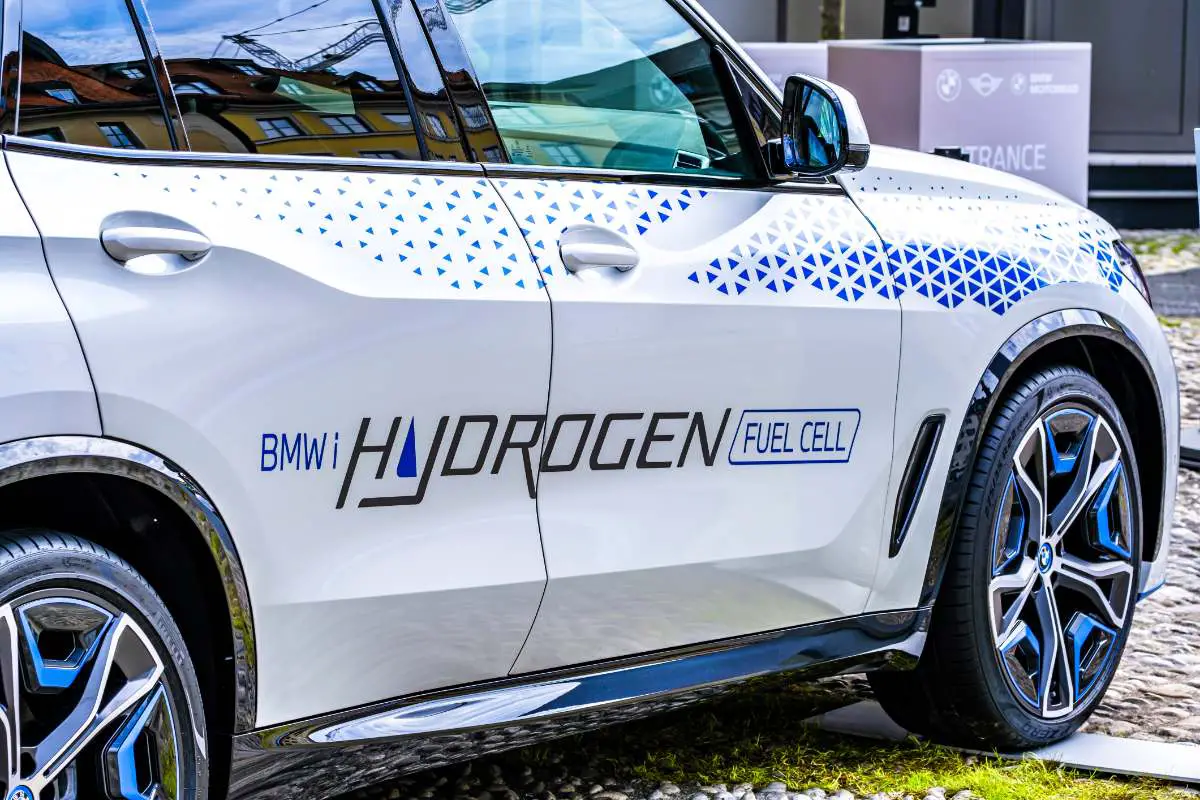
Recently, a few high-profile automakers have indeed shown increased interest in hydrogen power, suggesting a diversified approach to achieving zero-emission transportation.
Unlike electric vehicles that store energy in batteries, hydrogen vehicles convert hydrogen gas into electricity to power an electric motor.
Despite this renewed interest in hydrogen, it’s important to note that the transition is not uniform across the industry.
Major manufacturers continue to invest in both technologies, forecasting a future where different powertrain solutions may coexist.
Key Takeaways
- The automotive industry is examining both electric and hydrogen technologies for future vehicle powertrains.
- Interest in hydrogen fuel cells has grown, though it hasn’t eclipsed the focus on electric vehicles.
- The industry sees potential for multiple clean energy solutions to coexist in the long term.
Recently Some High Profile Automakers Have Changed Tack And Have Ditched Electric Plans For Hydrogen
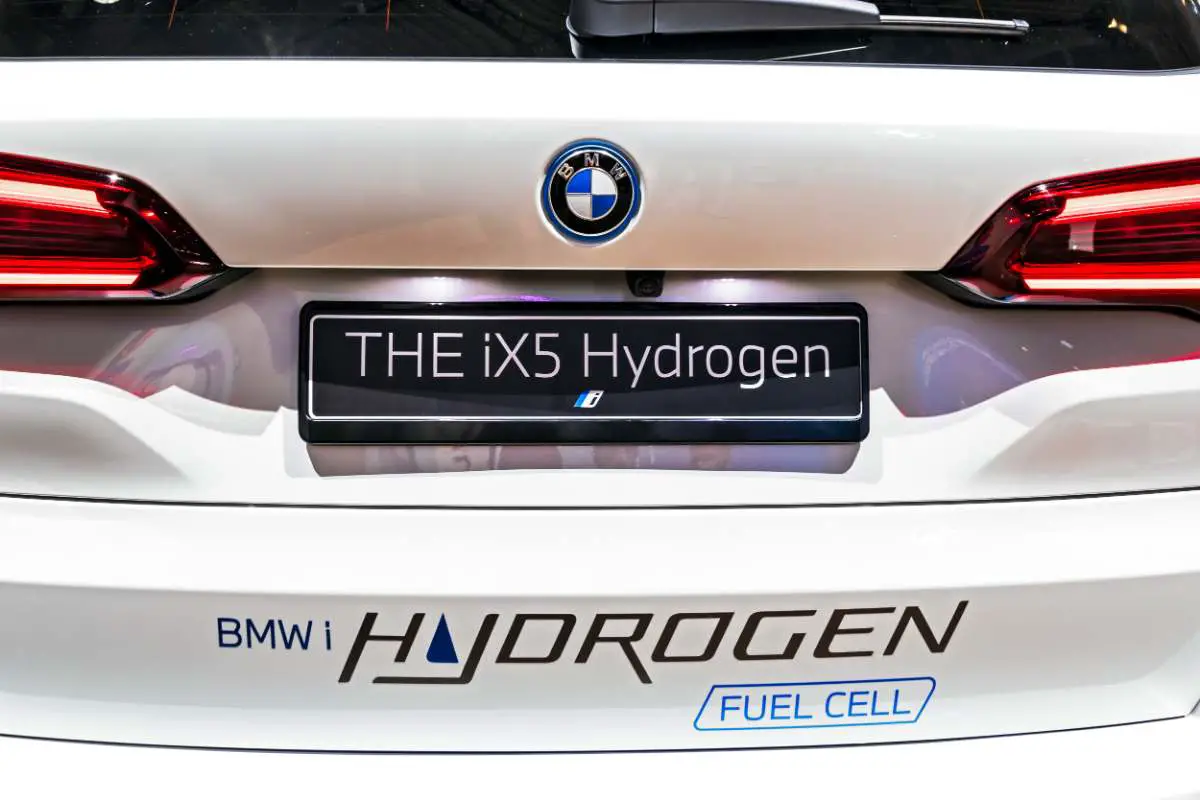
In a landscape dominated by the push for electrification, recent moves by some automakers signal a pivot towards hydrogen power. This shift is embodied by BMW’s new emphasis on hydrogen fuel cells over battery electric vehicles.
Does This Mean That Hydrogen Powered Vehicles Are Emerging As A Significant Contender?
BMW, alongside Toyota and Hyundai, is championing hydrogen fuel cells, suggesting they view this technology as more than just a niche alternative.
The decision by these manufacturers to invest in hydrogen indicates a belief in its potential to serve as a substantial segment in future mobility solutions.
They are expanding their hydrogen-powered portfolios, with Toyota’s Mirai and Hyundai’s Nexo fuel cell vehicles leading the charge, and BMW planning to produce a hydrogen-powered X5 in the near future.
What Are The Reasons For Choosing Hydrogen Over Electric?
Automakers such as BMW are prioritizing hydrogen power for multiple reasons:
- Refueling Infrastructure and Range: Hydrogen offers quick refueling times comparable to conventional gasoline and longer range than most electric vehicles (EVs).
- Fuel Cell Technology: It converts hydrogen into electricity while emitting only water vapor, aligning with global carbon neutrality goals.
They suggest hydrogen’s suitability for larger vehicles and longer distances over battery EVs while maintaining a focus on environmental sustainability. These factors contribute to hydrogen’s growing appeal as an energy carrier and power source for the automotive industry.
Historical Context of Hydrogen in the Automotive Industry

Delving into the historical context of hydrogen in the automotive sector unveils a significant evolution of technology and a commitment by major industry players towards a sustainable future.
Rise of Hydrogen Technologies
Hydrogen, as a clean energy carrier, has been explored since the 19th century, with the concept of hydrogen-powered vehicles dating back to the early 1800s.
The development of hydrogen fuel cell technology marked a transformative period for the industry, providing a means to power vehicles by converting hydrogen into electricity.
- Early Developments: The first recorded internal combustion engines using hydrogen were experimented with in the early 19th century.
- Fuel Cell Innovation: The mid-20th century saw the advent of the fuel cell, which significantly boosted the potential for hydrogen-powered transportation.
Key Players in Hydrogen Adoption
Several automotive companies have taken the lead in bringing hydrogen technology to the marketplace, notably Toyota and Hyundai.
- Toyota: They launched the Mirai in 2014, becoming a pioneer in commercializing hydrogen fuel cell vehicles.
- Hyundai: They have invested substantially in hydrogen technology, releasing models such as the Nexo, underlining their commitment to this energy source.
This strategic push by influential companies has propelled the credibility and viability of hydrogen in contemporary and future mobility ecosystems.
Comparison of Hydrogen and Electric Vehicles
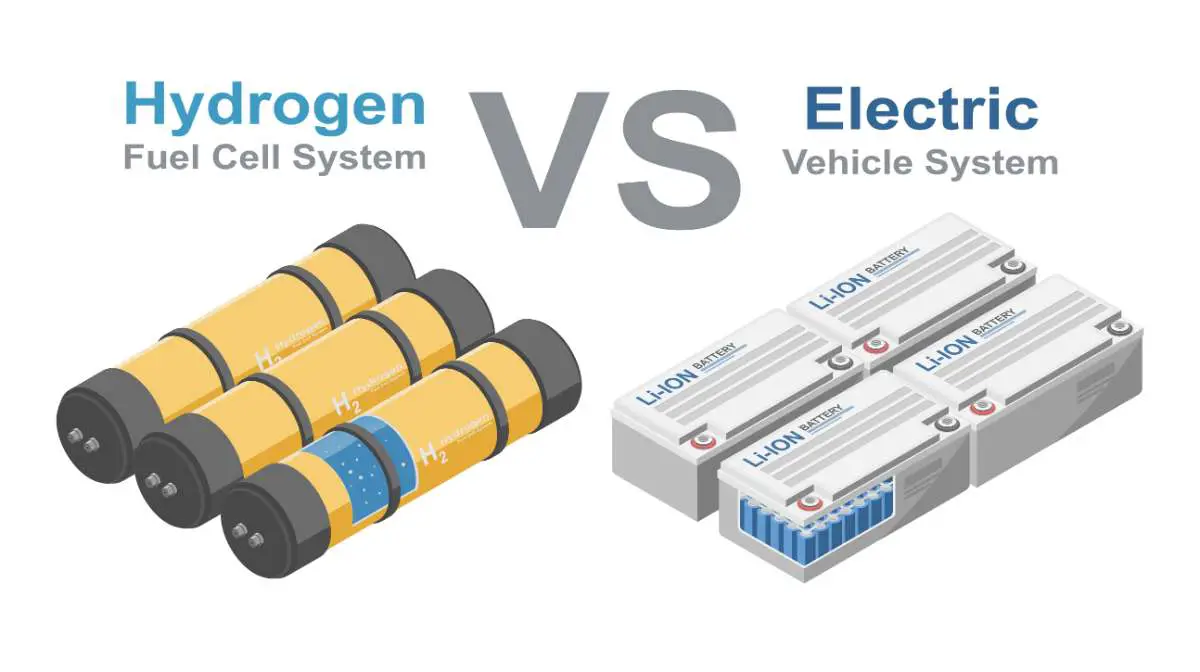
In the automotive sector, the key difference between hydrogen fuel-cell vehicles (FCVs) and electric vehicles (EVs) lies in their respective energy sources and infrastructure requirements.
While EVs draw power from rechargeable batteries, FCVs generate electricity onboard through hydrogen fuel cells.
Energy Efficiency and Fuel Economy
Electric Vehicles (EVs) are known for their high energy efficiency, with most of the electrical energy stored in batteries converted to drive the wheels.
Unlike internal combustion engines, Battery Electric Vehicles (BEVs) have a simpler mechanism, which often results in less energy loss.
For instance, Regenerative braking systems in EVs recapture energy that would otherwise be lost, contributing to an overall efficient use of power.
In contrast, Hydrogen Fuel-Cell Vehicles (FCVs) involve a more complex conversion process. Hydrogen gas is converted into electricity through a fuel cell, which then powers the vehicle’s electric motors.
While hydrogen is more energy-dense compared to a lithium-ion battery, the process from storage to wheel is less energy efficient.
Infrastructure and Refueling
The infrastructure demands for both EVs and FCVs carry significant weight in their adoption rates. EVs require a vast network of charging infrastructure, which is growing but must continue to expand to meet rising demands.
Typical EV chargers range from slow home chargers to rapid chargers found in public stations, with the charging time depending on the charger’s capacity and the vehicle’s battery size.
Hydrogen FCVs face a more pronounced challenge in infrastructure. They depend on a network of hydrogen refueling stations, which are currently less widespread than EV charging stations.
Nevertheless, hydrogen offers the convenience of faster refueling, often under five minutes, akin to the experience at a traditional gas station.
Both EVs and FCVs continue to evolve, but their wide-scale adoption hinges on energy efficiency, fuel economy, and the expansion of their respective refueling infrastructures.
Current Market Trends in Alternative Fuel Vehicles
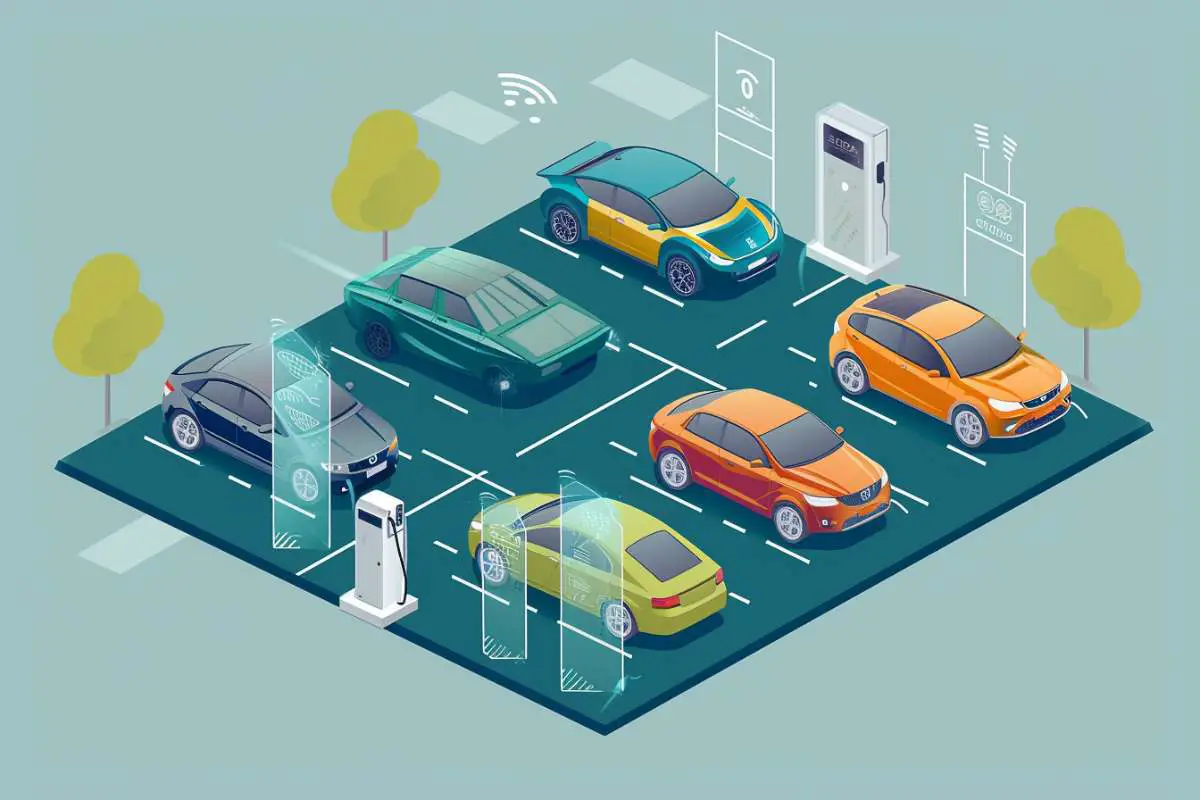
The automotive industry is seeing a significant shift towards alternative fuel vehicles (AFVs), with a marked increase in both demand and the development of hydrogen and electric vehicle technologies.
This trend is changing the transportation landscape, influencing consumer choices and guiding market leaders.
Demand and Popularity
The demand for alternative fuel vehicles is on a sharp incline. In particular, hydrogen-powered vehicles, such as Hyundai Nexo and Honda Clarity, have garnered attention for their quick refueling times and zero-emission advantages.
Moreover, hydrogen vehicles are carving a niche in the industry, with their market share gradually increasing due to the positive environmental impact and advancements in refueling infrastructure.
Consumer Choices and Market Leaders
Consumers are increasingly factoring sustainability into their purchasing decisions, steering towards low-emission transportation options.
Hyundai and Honda have become synonymous with hydrogen vehicle efforts through their models, Nexo and Clarity, respectively.
These vehicles are evidence of an ongoing commitment by automakers to offer diverse AFV choices to consumers.
It is crucial to note that while hydrogen vehicles are gaining traction, electric vehicles (EVs) continue to dominate the market in terms of diversity and volume, with some EVs being named amongst the best-selling vehicles in various regions.
Technological Advancements in Fuel Cells and Hydrogen Power
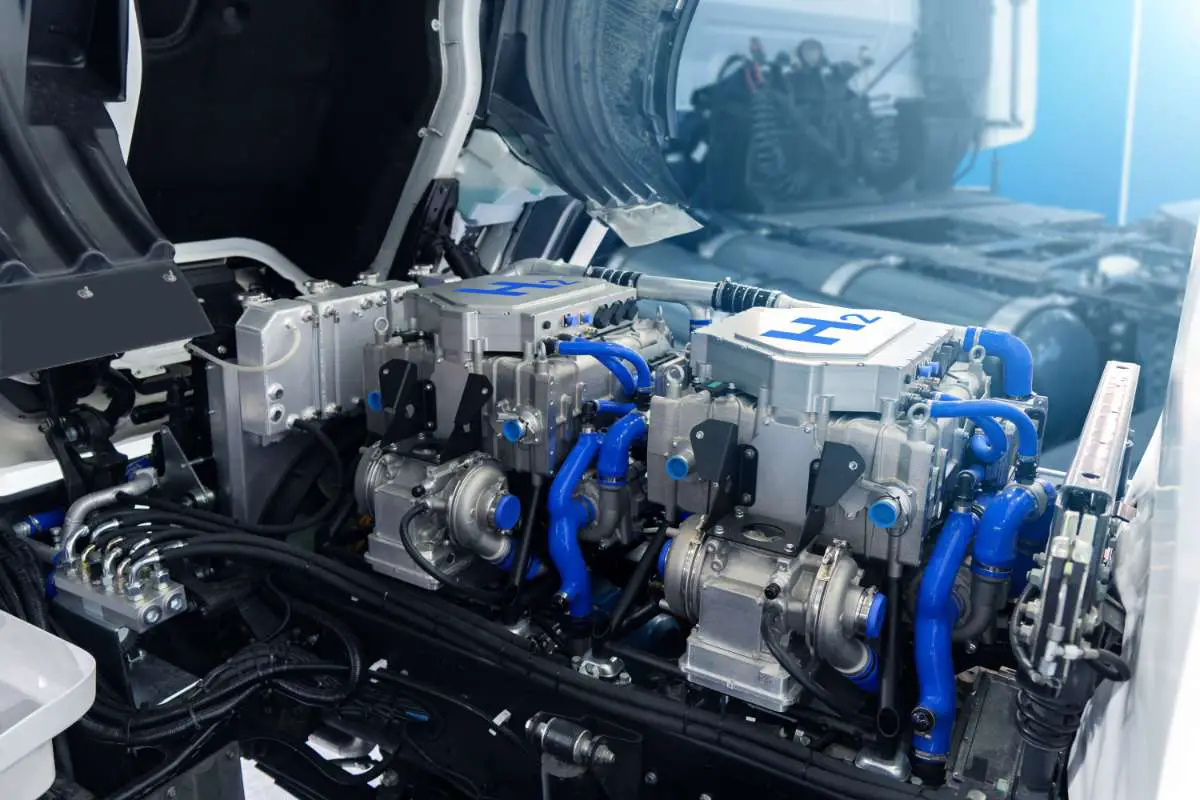
The automotive industry is witnessing significant developments in hydrogen fuel cell technology, bringing fuel cell vehicles (FCVs) like the Toyota Mirai to the forefront. These advancements are contributing to a cleaner and potentially more sustainable transportation sector.
Research and Innovations
Researchers at institutions like MIT are pioneering efforts to enhance hydrogen fuel cell efficiency and reduce reliance on expensive materials like lithium.
One breakthrough in hydrogen technology involves the use of more abundant materials to create catalysts that drive the electrolysis process, which is critical for generating green hydrogen.
Additionally, continuous improvements in fuel cell vehicles aim to increase their competitive edge over traditional electric vehicles, focusing on extending the range and reducing refueling times.
Sustainable Production of Hydrogen Fuel
Sustainable production methods are crucial for the advancement of hydrogen as a clean energy source, with green hydrogen being at the pinnacle of this endeavor.
Green hydrogen is produced using renewable energy sources through water electrolysis, without emitting harmful byproducts.
Innovative techniques are being explored to lower the cost of electrolysis and enhance the scalability of green hydrogen production, thus paving the way for its broader adoption in the automotive industry and beyond.
Economic and Environment Impact Study
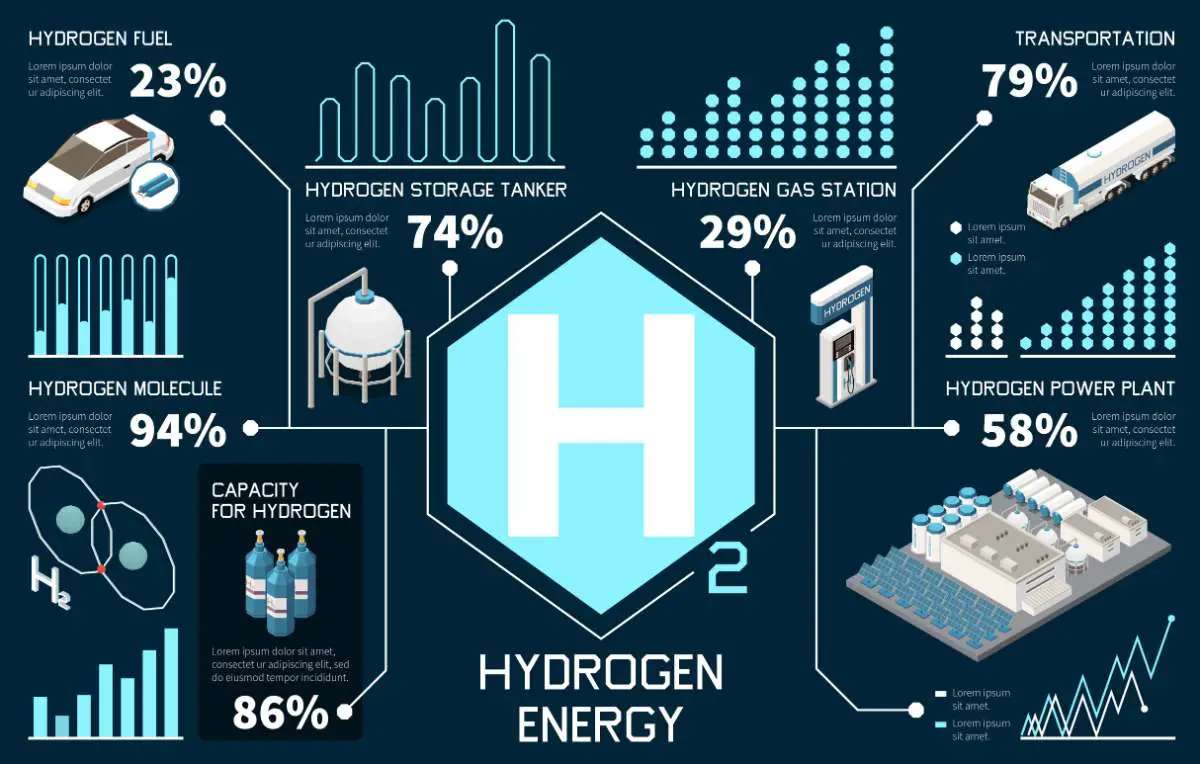
The automotive industry’s pivot towards hydrogen as a fuel source has spurred comprehensive studies evaluating its economic and environmental viability.
The focus on long-term cost efficiency and the reduction of the carbon footprint underscores this sector’s potential in aligning with sustainability and climate change goals.
Long-Term Cost Efficiency
When assessing the economic impact of hydrogen in the automotive industry, long-term cost efficiency is paramount.
The initial investment in hydrogen fuel technologies often presents a higher upfront cost compared to traditional fossil fuels or even battery electric vehicles.
However, the pricing of hydrogen fuel is expected to decrease as the technology matures and production scales.
Comparatively, the long-term operational costs of hydrogen-powered vehicles can be lower due to fewer moving parts and the declining price of hydrogen fuel with advancements in electrolysis and renewable energy sourcing.
- Investment: High upfront costs are required for infrastructure and vehicle production.
- Affordability: Economies of scale and technology advancements aim to reduce costs over time.
Carbon Footprint and Decarbonization
Analyzing hydrogen’s role in decarbonizing the automotive industry, its environmental impact is largely positive, particularly in terms of carbon dioxide emissions.
Hydrogen fuel cell vehicles emit only water vapor as a byproduct, presenting an almost negligible carbon footprint during operation. The sustainability of this technology, however, is contingent upon the source of the hydrogen.
If produced using renewable energy, the environmental benefits are significant, supporting crucial climate change mitigation efforts.
- Carbon Emissions: Hydrogen vehicles produce zero tailpipe emissions, directly reducing carbon dioxide output.
- Sustainability: Renewable energy-sourced hydrogen aids in overall decarbonization and environmental protection.
Both economic and environmental aspirations shape the narrative of hydrogen’s place in the future of transportation. They signal a transformative period where long-term fiscal prudence must harmonize with the pressing urgency to tackle climate change.
Global Hydrogen Infrastructure and Policy
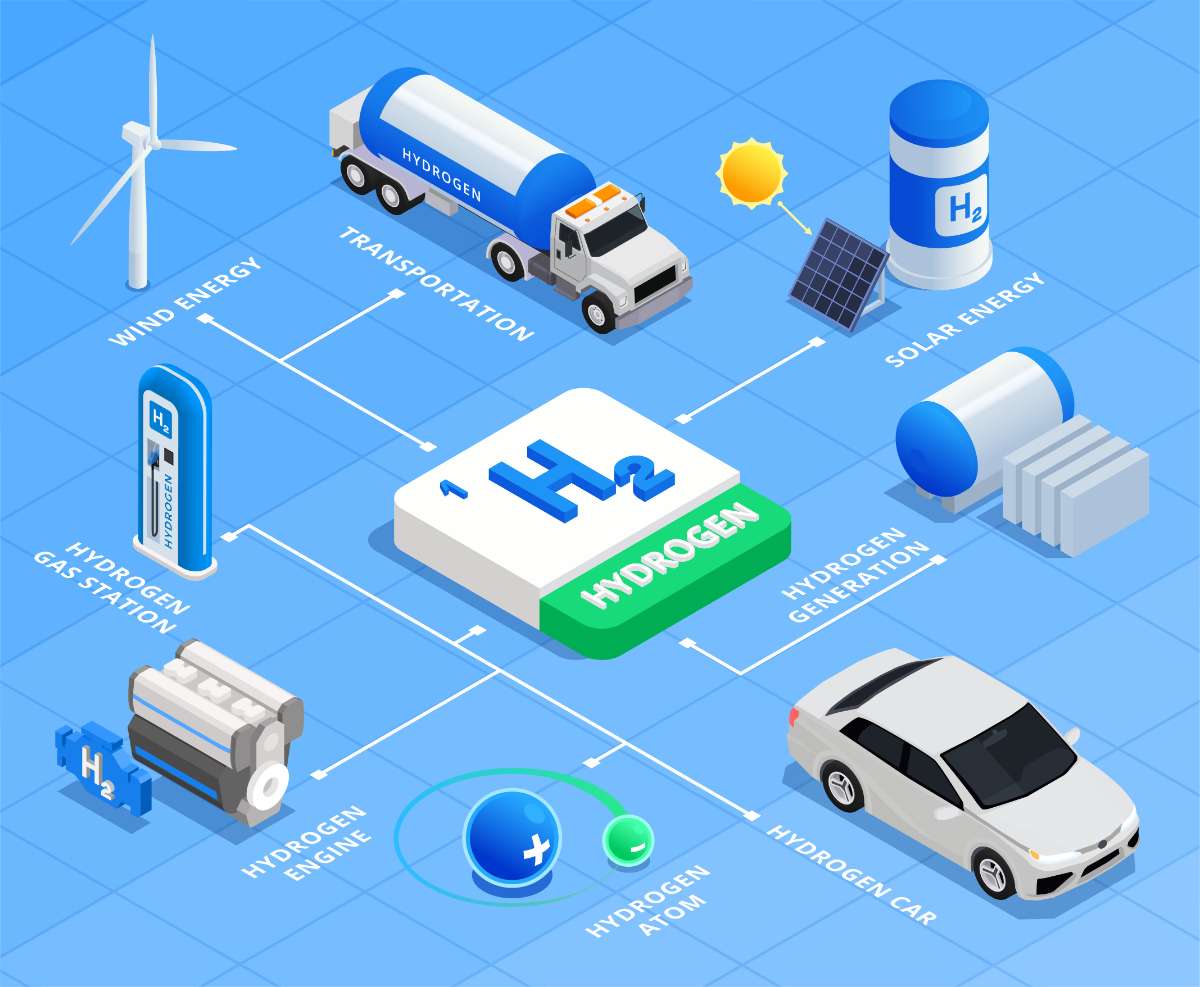
In the transition towards a low-carbon future, hydrogen infrastructure development and supportive policies are vital. Governments and the private sector are undertaking significant efforts to establish a hydrogen economy.
Government Initiatives
In the United States, California plays a leading role in promoting hydrogen fuel. The state has pursued policies to boost the hydrogen economy, particularly within Southern California, which aims to position itself as a hub for hydrogen fuel cell vehicles.
These initiatives include funding for hydrogen infrastructure projects to accommodate a growing fleet of commercial vehicles.
South Korea has invested substantially in hydrogen infrastructure to enable a wide adoption of fuel cell vehicles across the nation.
The government’s commitment is reflected in comprehensive plans which include a system of refueling stations and incentives for both manufacturers and consumers.
International Hydrogen Projects
Several international hydrogen projects have kicked off to test the real-world viability and impact of hydrogen as an alternative fuel.
One such hydrogen project involves collaboration between nations to trail large-scale production and supply chains for hydrogen fuel.
These projects are essential for assessing the practicality of hydrogen in various commercial applications and determining future investment areas.
.scalable {
font-size: 1em;
}
The Future of Hydrogen in the Automotive Sector
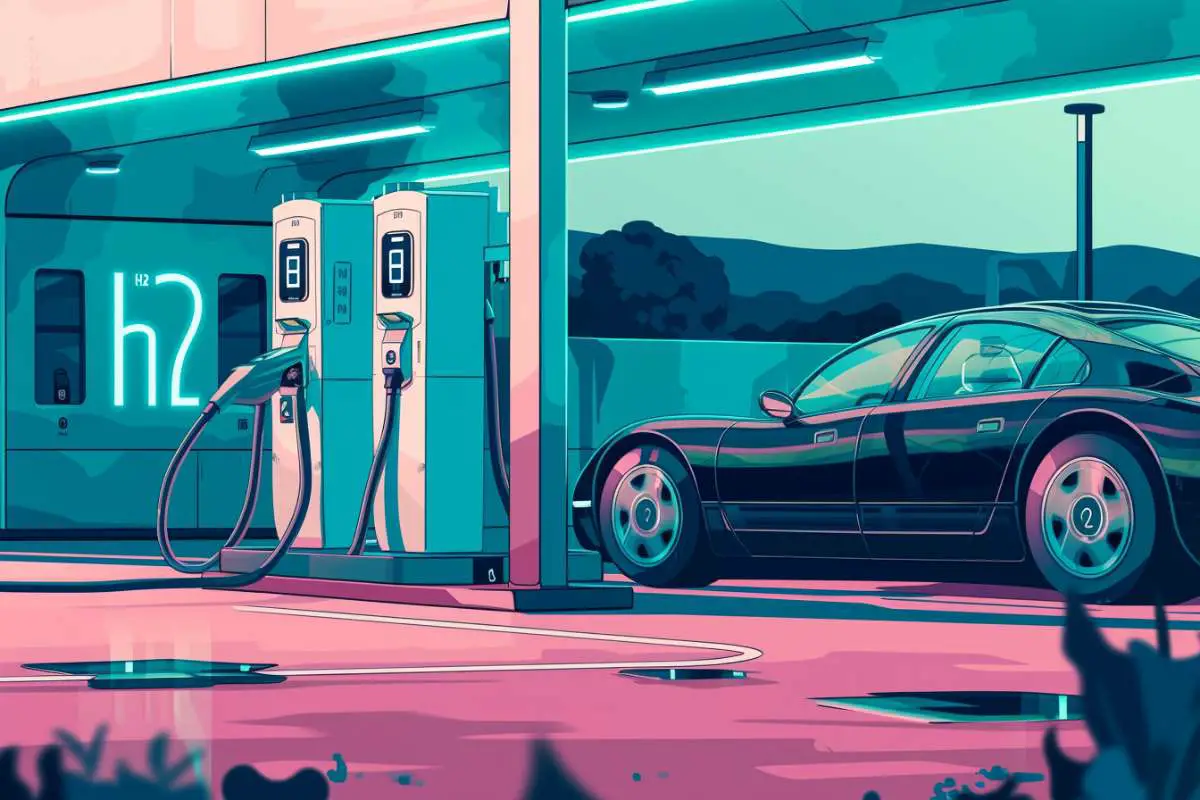
The automotive sector is on the brink of a revolutionary shift with hydrogen emerging as a promising alternative fuel. It posits a potential long-term solution towards achieving zero emissions in the industry.
Predicted Growth and Adoption
Hydrogen vehicles are anticipated to gain traction as an integral part of the clean energy transition.
Forecasts suggest that major industry players are progressively investing in hydrogen technology with predictions of significant market uptake by 2030.
A study conducted by the McKinsey & Company reveals a consortium’s vision for hydrogen’s role in meeting climate targets, indicating strengthening confidence among automotive, oil and gas, and industrial gas businesses in hydrogen’s potential.
Challenges and Opportunities
While hydrogen presents itself as an exciting energy carrier, the road ahead is lined with both challenges and opportunities. Cost, infrastructure, and production methods pose the greatest barriers for the industry.
The current hydrogen production is heavily reliant on fossil fuels, which contradicts its clean energy image.
However, the shift towards low-carbon hydrogen, or green hydrogen, is picking up as noted in Capgemini’s research, with organizations planning hefty investments by 2030.
This paves the way for hydrogen vehicles to represent a cornerstone of zero-emission vehicle markets, provided these challenges are adequately addressed.
Insights from Automotive Manufacturers

In exploring the automotive industry’s shift towards alternative fuels, manufacturers are increasingly investing in hydrogen technology, driven by the potential for long-range and quick refueling capabilities.
Commitments to Hydrogen Vehicle Production
Several prominent automotive manufacturers have made significant strides in developing hydrogen fuel cell vehicles (FCVs).
Toyota, for instance, continues to expand its lineup with the Toyota Mirai, a hydrogen fuel cell vehicle known for its environmental efficiency.
Honda has also been pioneering in this space, offering models like the Clarity Fuel Cell.
Meanwhile, BMW has been actively researching and developing hydrogen powertrains, eyeing potential market expansion. These companies are not merely dabbling in hydrogen; they are positioning it as a cornerstone for their future.
- Toyota: Development and expansion of the Toyota Mirai
- Honda: Production of the Clarity Fuel Cell
- BMW: Active research and development in hydrogen propulsion
Collaborations and Partnerships
Collaboration emerges as a key strategy in the hydrogen vehicle market, with various manufacturers opting to join forces.
Audi has teamed up with partners to work on fuel-cell concepts, betting on the synergies of shared knowledge and resources.
Volkswagen is exploring the role of hydrogen in the future of mobility, although their efforts are more nascent.
In the realm of heavy-duty transportation, a joint venture between Toyota and Kenworth demonstrated a hydrogen-powered truck, signaling the applicability of hydrogen beyond passenger vehicles.
Ford, while focused historically more on battery electric vehicles, is also exploring hydrogen’s utility in its lineup.
Conversely, companies like Nikola are challenging incumbents by focusing on fuel-cell hybrid electric vehicles tailored for the commercial truck market.
- Audi: Collaborations on fuel-cell technology
- Volkswagen: Early-stage hydrogen mobility explorations
- Toyota & Kenworth: Development of hydrogen-powered trucks
- Ford: Evaluating hydrogen in future propulsion strategies
- Nikola: Pioneer in fuel-cell hybrid electric commercial trucks
Through these strategic commitments and collaborations, automotive manufacturers are actively engaged in the evolution toward a hydrogen-powered future, indicating a clear industry movement that may shape the trajectory of global transportation.
Comparative Analysis of Automotive Fuels
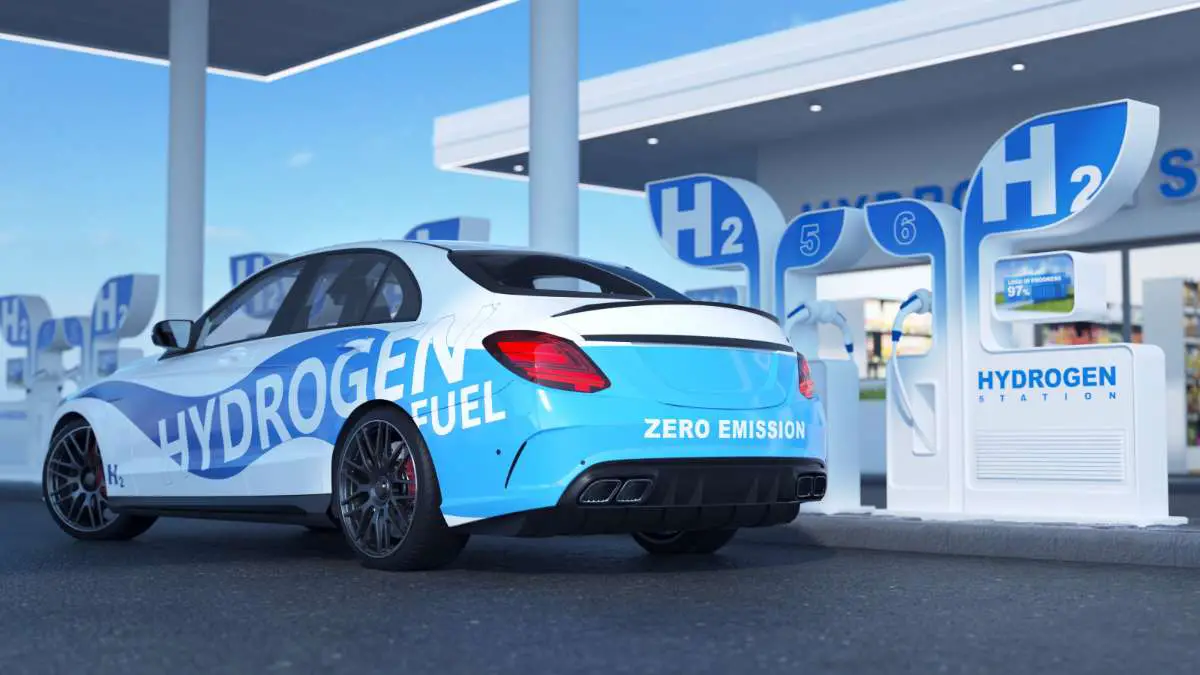
In the evolving landscape of automotive propulsion, hydrogen fuel-cell vehicles and battery-electric vehicles are emerging as key players in the shift away from fossil fuels.
This section examines the stark differences in performance, infrastructure, and fuel production between these technologies while considering the role of gasoline and natural gas in today’s market.
Hydrogen vs. Battery-Electric Power
Hydrogen fuel-cell vehicles (FCEVs) utilize hydrogen gas to produce electricity through a chemical reaction within a fuel cell, emitting only water vapor as a byproduct.
These vehicles boast quick refueling times, comparable to traditional gasoline vehicles, and longer driving ranges than many battery-electric vehicles (BEVs).
However, the infrastructural buildup for hydrogen refueling is in its infancy, requiring significant investment to become widely available.
On the other hand, battery-electric vehicles rely on electricity stored in batteries, which can be recharged using existing electrical grid networks.
While BEVs benefit from a more established charging infrastructure, they face challenges related to charging time and range, which may vary depending on the model and battery technology.
Additionally, the production of BEVs is heavily reliant on rare materials and minerals, necessitating the need for sustainable mining practices and recycling.
Fossil Fuels Transition to Cleaner Alternatives
The automotive industry’s reliance on gasoline and natural gas is undergoing a transformative phase, with a clear intent to transition towards more sustainable fuel sources.
Gasoline, derived from crude oil, has been the dominant fuel type for internal combustion engines, yet it contributes significantly to greenhouse gas emissions.
Similarly, natural gas, though cleaner than other fossil fuels, still releases carbon dioxide when combusted.
FCEVs offer an alternative with their capacity to utilize hydrogen produced from a variety of sources, including natural gas and renewable resources like water through electrolysis.
This flexibility permits the integration with existing gas networks for hydrogen delivery, leveraging current infrastructure to a certain extent.
In conclusion, while FCEVs exhibit potential, the existing predominance of gasoline-powered vehicles and the growing market share of BEVs, complemented by their current infrastructure, continue to shape the dynamics of the automotive fuels landscape.
The transition to hydrogen as a primary fuel source for vehicles will depend on advancements in technology, expansion of hydrogen production, and infrastructure, as well as cost reductions for fuel-cell technologies.
- Tesla Charger Installation Cost (Home Setups) - March 1, 2024
- Tesla Phone Key Disconnected (Troubleshooting Guide and Quick Fixes) - March 1, 2024
- Tesla FSD 12 (Explained) - March 1, 2024